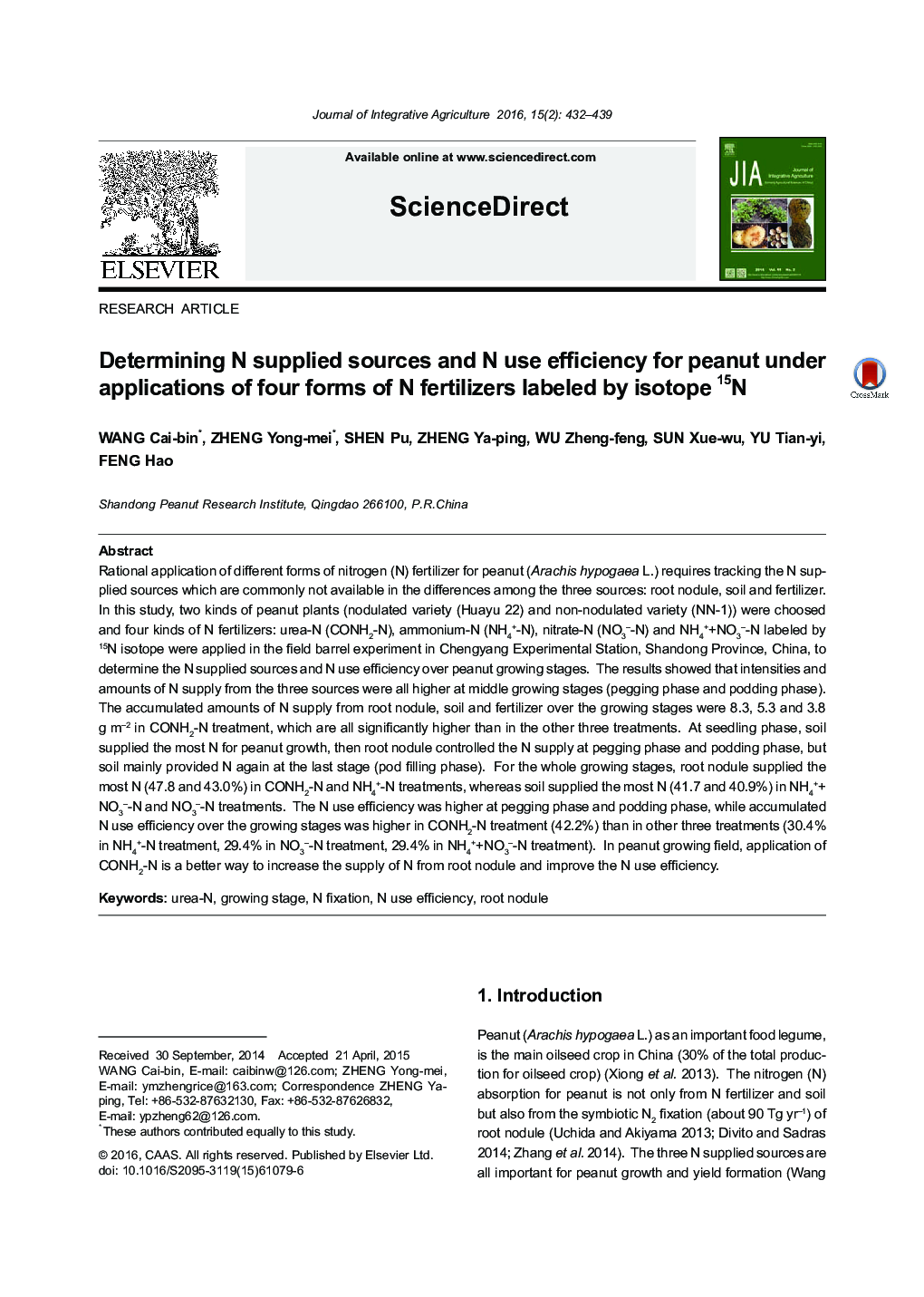| Article ID | Journal | Published Year | Pages | File Type |
|---|---|---|---|---|
| 10180059 | Journal of Integrative Agriculture | 2016 | 8 Pages |
Abstract
Rational application of different forms of nitrogen (N) fertilizer for peanut (Arachis hypogaea L.) requires tracking the N supplied sources which are commonly not available in the differences among the three sources: root nodule, soil and fertilizer. In this study, two kinds of peanut plants (nodulated variety (Huayu 22) and non-nodulated variety (NN-1)) were choosed and four kinds of N fertilizers: urea-N (CONH2-N), ammonium-N (NH4+-N), nitrate-N (NO3â-N) and NH4++NO3â-N labeled by 15N isotope were applied in the field barrel experiment in Chengyang Experimental Station, Shandong Province, China, to determine the N supplied sources and N use efficiency over peanut growing stages. The results showed that intensities and amounts of N supply from the three sources were all higher at middle growing stages (pegging phase and podding phase). The accumulated amounts of N supply from root nodule, soil and fertilizer over the growing stages were 8.3, 5.3 and 3.8 g mâ2 in CONH2-N treatment, which are all significantly higher than in the other three treatments. At seedling phase, soil supplied the most N for peanut growth, then root nodule controlled the N supply at pegging phase and podding phase, but soil mainly provided N again at the last stage (pod filling phase). For the whole growing stages, root nodule supplied the most N (47.8 and 43.0%) in CONH2-N and NH4+-N treatments, whereas soil supplied the most N (41.7 and 40.9%) in NH4++ NO3â-N and NO3â-N treatments. The N use efficiency was higher at pegging phase and podding phase, while accumulated N use efficiency over the growing stages was higher in CONH2-N treatment (42.2%) than in other three treatments (30.4% in NH4+-N treatment, 29.4% in NO3â-N treatment, 29.4% in NH4++NO3â-N treatment). In peanut growing field, application of CONH2-N is a better way to increase the supply of N from root nodule and improve the N use efficiency.
Related Topics
Life Sciences
Agricultural and Biological Sciences
Agricultural and Biological Sciences (General)
Authors
Cai-bin WANG, Yong-mei ZHENG, Pu SHEN, Ya-ping ZHENG, Zheng-feng WU, Xue-wu SUN, Tian-yi YU, Hao FENG,
